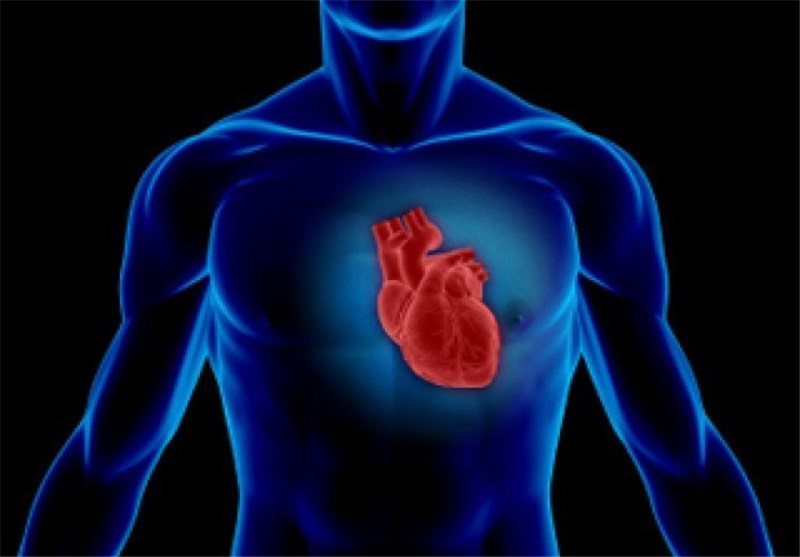
Cimaglermin alfa , GGF2
RN: 1350717-96-2, UNII: B2A4EZ9I83
CGF-2; GGF-2 – Acorda; Glial growth factor 2 – Acorda; Neuregulin 1 protein; Neuregulin 1β3; NRG1 protein; Recombinant human glial growth factor-2 (rhGGF 2) – Acorda Therapeutics; rhGGF2 – Acorda
Treatment of Congestive Heart Failure, rhGGF 2
Molecular Formula, C1747-H2770-N502-O535-S17 (unglycosylated),
Molecular Weight, 39923.2958
Glial growth factor 2 (GGF2): (253-L-glutamine(R>Q))human pro-neuregulin isoform 9 precursor-(51-422)-peptide
Phase I, ACORDA, heart failure
Sequence:
1GNEAAPAGAS VCYSSPPSVG SVQELAQRAA VVIEGKVHPQ RRQQGALDRK
51AAAAAGEAGA WGGDREPPAA GPRALGPPAE EPLLAANGTV PSWPTAPVPS
101AGEPGEEAPY LVKVHQVWAV KAGGLKKDSL LTVRLGTWGH PAFPSCGRLK
151EDSRYIFFME PDANSTSRAP AAFRASFPPL ETGRNLKKEV SRVLCKRCAL
201PPQLKEMKSQ ESAAGSKLVL RCETSSEYSS LRFKWFKNGN ELNRKNKPQN
251IKIQKKPGKS ELRINKASLA DSGEYMCKVI SKLGNDSASA NITIVESNAT
301STSTTGTSHL VKCAEKEKTF CVNGGECFMV KDLSNPSRYL CKCPNEFTGD
351RCQNYVMASF YSTSTPFLSL PE
| Type |
Location |
Description |
| bridge |
Cys-12 – Cys-146 |
disulfide bridge |
| bridge |
Cys-195 – Cys-198 |
disulfide bridge |
| bridge |
Cys-222 – Cys-277 |
disulfide bridge |
| bridge |
Cys-313 – Cys-327 |
disulfide bridge |
| bridge |
Cys-321 – Cys-341 |
disulfide bridge |
| bridge |
Cys-343 – Cys-352 |
disulfide bridge |
- Class Growth factors; Heart failure therapies; Nerve tissue proteins; Neuregulins
- Mechanism of Action Epidermal growth factor receptor modulators
- Orphan Drug Status No
- On Fast track Heart failure
- New Molecular Entity Yes
Highest Development Phases
- Phase I Heart failure
- Preclinical Neurological disorders; Stroke
Most Recent Events
- 01 Jul 2016 Acorda Therapeutics completes a phase Ib trial for Heart failure in USA (NCT01944683)
- 30 Jul 2015 Adverse events data from a phase Ib trial in Heart failure released by Acorda
- 02 Jun 2015 The US FDA places a clinical hold on phase Ib trial in Heart failure in USA (Acorda Therapeutics, Form 8-K, June 2015)
-
• Cimaglermin is a recombinant neuregulin that appears to be important for essential cardiac repair processes.
-
• Forty patients with significant left ventricular dysfunction and heart failure were randomized in a phase 1 double blind, placebo controlled, single ascending dose study to examine safety and tolerability.
-
• An infusion of cimaglermin was generally tolerated except for transient nausea and headache.
-
• A dose-limiting toxicity of transient elevated liver transaminases and bilirubin was observed at the highest planned dose.
-
• There was a sustained improvement in left ventricular ejection fraction over 3 months at higher doses tested compared to lower doses or placebo.
The product is in phase I clinical trials fat Acorda for the treatment of heart failure. The company is also evaluating the drug in preclinical studies for the treatment of neurological diseases. Acorda and PAION had been evaluating GGF2 in preclinical development for the treatment of multiple sclerosis and stroke, respectively; however, recent progress reports are not available at present.
In 2002, the compound was licensed on an exclusive worldwide basis to Acorda by CeNeS for the treatment of multiple sclerosis. In 2008, PAION acquired CeNeS.
The FDA has granted fast track designation to GGF2 for the treatment of heart failure
Heart failure, characterized by a loss of cardiac function, is among the leading causes of death worldwide. A significant portion of heart failure patients, particularly those with severe left ventricular systolic dysfunction, do not sufficiently respond to current medical therapy.
The new study made by the American College of Cardiology was published on in JACC: Basic to Translational Science on Monday.
Researchers examined the safety and efficacy of a single infusion of cimaglermin, which acts as a growth factor for the heart, helping the structural, metabolic and contractile elements of the heart to repair itself following injury. The study enrolled 40 heart failure patients who were taking optimal medical therapy for at least three months prior to the trial. Compared to patients who received a placebo, patients who received a high dose of cimaglermin had a sustained increase in left ventricular ejection fraction, or pumping capacity, through 90 days after dosing, with the maximum increase reached at day 28.
“These findings support continued clinical development of the investigational drug cimaglermin, including further safety evaluations and detailing the potential improvement on clinical heart failure outcome measures,” said Daniel J. Lenihan MD, from the division of cardiovascular medicine at Vanderbilt University and the lead author of the study. “As with all experimental therapeutics, additional studies will be required and subject to regulatory review to determine if the relative risks and benefits of cimaglermin warrant approval.”
The most common side effects were headache and nausea, which were temporarily associated with exposure to the drug. One patient receiving the highest planned dose of cimaglermin experienced an adverse reaction that met the stopping criteria of Federal Drug Administration guidance for drug induced liver injury.
Limitations of this study include the small sample size and the fact that patients only received a single infusion rather than multiple doses.
“Although the results of the study must be regarded as provisional because of the small numbers of patients, the results of this study are nonetheless very exciting,” said Douglas L. Mann, MD, FACC, editor-in-chief of JACC: Basic to Translational Science. “Instead of blocking the fundamental mechanisms that lead to cardiac injury, the early results with cimaglermin suggest that it may also be possible to administer therapeutics that allow the failing heart to repair itself using its own repair mechanisms. If the results of this study can be replicated and translated into improvements in clinical outcomes in larger numbers of patients in phase II and III clinical trials, it will represent a paradigm shift in the way in which clinicians treat patients with heart failure.”

PATENTS
WO 1996030403
WO 2009108390
WO 2010030317
WO 2010044917
WO 2012021818
WO 2013149163
WO 2014138502
/////////Cimaglermin, Cimaglermin alfa , GGF2, rhGGF 2, fast track designation, acorda
smiles
CC[C@H](C)[C@H](NC(=O)[C@H](CCCCN)NC(=O)[C@@H](NC(=O)[C@H](CC(=O)N)NC(=O)[C@H](CCC(=O)N)NC(=O)[C@@H]1CCCN1C(=O)[C@H](CCCCN)NC(=O)[C@H](CC(=O)N)NC(=O)[C@H](CCCCN)NC(=O)[C@H](CCCNC(=N)N)NC(=O)[C@H](CC(=O)N)NC(=O)[C@H](CC(C)C)NC(=O)[C@H](CCC(=O)O)NC(=O)[C@H](CC(=O)N)NC(=O)CNC(=O)[C@H](CC(=O)N)NC(=O)[C@H](CCCCN)NC(=O)[C@H](Cc2ccccc2)NC(=O)[C@H](Cc3c[nH]c4ccccc34)NC(=O)[C@H](CCCCN)NC(=O)[C@H](Cc5ccccc5)NC(=O)[C@H](CCCNC(=N)N)NC(=O)[C@H](CC(C)C)NC(=O)[C@H](CO)NC(=O)[C@H](CO)NC(=O)[C@H](Cc6ccc(O)cc6)NC(=O)[C@H](CCC(=O)O)NC(=O)[C@H](CO)NC(=O)[C@H](CO)NC(=O)[C@@H](NC(=O)[C@H](CCC(=O)O)NC(=O)[C@H](CS)NC(=O)[C@H](CCCNC(=N)N)NC(=O)[C@H](CC(C)C)NC(=O)[C@@H](NC(=O)[C@H](CC(C)C)NC(=O)[C@H](CCCCN)NC(=O)[C@H](CO)NC(=O)CNC(=O)[C@H](C)NC(=O)[C@H](C)NC(=O)[C@H](CO)NC(=O)[C@H](CCC(=O)O)NC(=O)[C@H](CCC(=O)N)NC(=O)[C@H](CO)NC(=O)[C@H](CCCCN)NC(=O)[C@H](CCSC)NC(=O)[C@H](CCC(=O)O)NC(=O)[C@H](CCCCN)NC(=O)[C@H](CC(C)C)NC(=O)[C@H](CCC(=O)N)NC(=O)[C@@H]7CCCN7C(=O)[C@@H]8CCCN8C(=O)[C@H](CC(C)C)NC(=O)[C@H](C)NC(=O)[C@H](CS)NC(=O)[C@H](CCCNC(=N)N)NC(=O)[C@H](CCCCN)NC(=O)[C@H](CS)NC(=O)[C@H](CC(C)C)NC(=O)[C@@H](NC(=O)[C@H](CCCNC(=N)N)NC(=O)[C@H](CO)NC(=O)[C@@H](NC(=O)[C@H](CCC(=O)O)NC(=O)[C@H](CCCCN)NC(=O)[C@H](CCCCN)NC(=O)[C@H](CC(C)C)NC(=O)[C@H](CC(=O)N)NC(=O)[C@H](CCCNC(=N)N)NC(=O)CNC(=O)[C@@H](NC(=O)[C@H](CCC(=O)O)NC(=O)[C@H](CC(C)C)NC(=O)[C@@H]9CCCN9C(=O)[C@@H]%10CCCN%10C(=O)[C@H](Cc%11ccccc%11)NC(=O)[C@H](CO)NC(=O)[C@H](C)NC(=O)[C@H](CCCNC(=N)N)NC(=O)[C@H](Cc%12ccccc%12)NC(=O)[C@H](C)NC(=O)[C@H](C)NC(=O)[C@@H]%13CCCN%13C(=O)[C@H](C)NC(=O)[C@H](CCCNC(=N)N)NC(=O)[C@H](CO)NC(=O)[C@@H](NC(=O)[C@H](CO)NC(=O)[C@H](CC(=O)N)NC(=O)[C@H](C)NC(=O)[C@H](CC(=O)O)NC(=O)[C@@H]%14CCCN%14C(=O)[C@H](CCC(=O)O)NC(=O)[C@H](CCSC)NC(=O)[C@H](Cc%15ccccc%15)NC(=O)[C@H](Cc%16ccccc%16)NC(=O)[C@@H](NC(=O)[C@H](Cc%17ccc(O)cc%17)NC(=O)[C@H](CCCNC(=N)N)NC(=O)[C@H](CO)NC(=O)[C@H](CC(=O)O)NC(=O)[C@H](CCC(=O)O)NC(=O)[C@H](CCCCN)NC(=O)[C@H](CC(C)C)NC(=O)[C@H](CCCNC(=N)N)NC(=O)CNC(=O)[C@H](CS)NC(=O)[C@H](CO)NC(=O)[C@@H]%18CCCN%18C(=O)[C@H](Cc%19ccccc%19)NC(=O)[C@H](C)NC(=O)[C@@H]%20CCCN%20C(=O)[C@H](Cc%21cnc[nH]%21)NC(=O)CNC(=O)[C@H](Cc%22c[nH]c%23ccccc%22%23)NC(=O)[C@@H](NC(=O)CNC(=O)[C@H](CC(C)C)NC(=O)[C@H](CCCNC(=N)N)NC(=O)[C@@H](NC(=O)[C@@H](NC(=O)[C@H](CC(C)C)NC(=O)[C@H](CC(C)C)NC(=O)[C@H](CO)NC(=O)[C@H](CC(=O)O)NC(=O)[C@H](CCCCN)NC(=O)[C@H](CCCCN)NC(=O)[C@H](CC(C)C)NC(=O)CNC(=O)CNC(=O)[C@H](C)NC(=O)[C@H](CCCCN)NC(=O)[C@@H](NC(=O)[C@H](C)NC(=O)[C@H](Cc%24c[nH]c%25ccccc%24%25)NC(=O)[C@@H](NC(=O)[C@H](CCC(=O)N)NC(=O)[C@H](Cc%26cnc[nH]%26)NC(=O)[C@@H](NC(=O)[C@H](CCCCN)NC(=O)[C@@H](NC(=O)[C@H](CC(C)C)NC(=O)[C@H](Cc%27ccc(O)cc%27)NC(=O)[C@@H]%28CCCN%28C(=O)[C@H](C)NC(=O)[C@H](CCC(=O)O)NC(=O)[C@H](CCC(=O)O)NC(=O)CNC(=O)[C@@H]%29CCCN%29C(=O)[C@H](CCC(=O)O)NC(=O)CNC(=O)[C@H](C)NC(=O)[C@H](CO)NC(=O)[C@@H]%30CCCN%30C(=O)[C@@H](NC(=O)[C@@H]%31CCCN%31C(=O)[C@H](C)NC(=O)[C@@H](NC(=O)[C@@H]%32CCCN%32C(=O)[C@H](Cc%33c[nH]c%34ccccc%33%34)NC(=O)[C@H](CO)NC(=O)[C@@H]%35CCCN%35C(=O)[C@@H](NC(=O)[C@@H](NC(=O)CNC(=O)[C@H](CC(=O)N)NC(=O)[C@H](C)NC(=O)[C@H](C)NC(=O)[C@H](CC(C)C)NC(=O)[C@H](CC(C)C)NC(=O)[C@@H]%36CCCN%36C(=O)[C@H](CCC(=O)O)NC(=O)[C@H](CCC(=O)O)NC(=O)[C@H](C)NC(=O)[C@@H]%37CCCN%37C(=O)[C@@H]%38CCCN%38C(=O)CNC(=O)[C@H](CC(C)C)NC(=O)[C@H](C)NC(=O)[C@H](CCCNC(=N)N)NC(=O)[C@@H]%39CCCN%39C(=O)CNC(=O)[C@H](C)NC(=O)[C@H](C)NC(=O)[C@@H]%40CCCN%40C(=O)[C@@H]%41CCCN%41C(=O)[C@H](CCC(=O)O)NC(=O)[C@H](CCCNC(=N)N)NC(=O)[C@H](CC(=O)O)NC(=O)CNC(=O)CNC(=O)[C@H](Cc%42c[nH]c%43ccccc%42%43)NC(=O)[C@H](C)NC(=O)CNC(=O)[C@H](C)NC(=O)[C@H](CCC(=O)O)NC(=O)CNC(=O)[C@H](C)NC(=O)[C@H](C)NC(=O)[C@H](C)NC(=O)[C@H](C)NC(=O)[C@H](C)NC(=O)[C@H](CCCCN)NC(=O)[C@H](CCCNC(=N)N)NC(=O)[C@H](CC(=O)O)NC(=O)[C@H](CC(C)C)NC(=O)[C@H](C)NC(=O)CNC(=O)[C@H](CCC(=O)N)NC(=O)[C@H](CCC(=O)N)NC(=O)[C@H](CCCNC(=N)N)NC(=O)[C@H](CCCNC(=N)N)NC(=O)[C@H](CCC(=O)N)NC(=O)[C@@H]%44CCCN%44C(=O)[C@H](Cc%45cnc[nH]%45)NC(=O)[C@@H](NC(=O)[C@H](CCCCN)NC(=O)CNC(=O)[C@H](CCC(=O)O)NC(=O)[C@@H](NC(=O)[C@@H](NC(=O)[C@@H](NC(=O)[C@H](C)NC(=O)[C@H](C)NC(=O)[C@H](CCCNC(=N)N)NC(=O)[C@H](CCC(=O)N)NC(=O)[C@H](C)NC(=O)[C@H](CC(C)C)NC(=O)[C@H](CCC(=O)O)NC(=O)[C@H](CCC(=O)N)NC(=O)[C@@H](NC(=O)[C@H](CO)NC(=O)CNC(=O)[C@@H](NC(=O)[C@H](CO)NC(=O)[C@@H]%46CCCN%46C(=O)[C@@H]%47CCCN%47C(=O)[C@H](CO)NC(=O)[C@H](CO)NC(=O)[C@H](Cc%48ccc(O)cc%48)NC(=O)[C@H](CS)NC(=O)[C@@H](NC(=O)[C@H](CO)NC(=O)[C@H](C)NC(=O)CNC(=O)[C@H](C)NC(=O)[C@@H]%49CCCN%49C(=O)[C@H](C)NC(=O)[C@H](C)NC(=O)[C@H](CCC(=O)O)NC(=O)[C@H](CC(=O)N)NC(=O)CN)C(C)C)C(C)C)C(C)C)C(C)C)C(C)C)[C@@H](C)CC)C(C)C)[C@@H](C)O)C(C)C)[C@@H](C)O)C(C)C)C(C)C)C(C)C)C(C)C)C(C)C)[C@@H](C)O)C(C)C)[C@@H](C)O)[C@@H](C)CC)[C@@H](C)O)[C@@H](C)O)C(C)C)C(C)C)C(C)C)[C@@H](C)O)[C@@H](C)CC)C(=O)N[C@@H](CCC(=O)N)C(=O)N[C@@H](CCCCN)C(=O)N[C@@H](CCCCN)C(=O)N%50CCC[C@H]%50C(=O)NCC(=O)N[C@@H](CCCCN)C(=O)N[C@@H](CO)C(=O)N[C@@H](CCC(=O)O)C(=O)N[C@@H](CC(C)C)C(=O)N[C@@H](CCCNC(=N)N)C(=O)N[C@@H]([C@@H](C)CC)C(=O)N[C@@H](CC(=O)N)C(=O)N[C@@H](CCCCN)C(=O)N[C@@H](C)C(=O)N[C@@H](CO)C(=O)N[C@@H](CC(C)C)C(=O)N[C@@H](C)C(=O)N[C@@H](CC(=O)O)C(=O)N[C@@H](CO)C(=O)NCC(=O)N[C@@H](CCC(=O)O)C(=O)N[C@@H](Cc%51ccc(O)cc%51)C(=O)N[C@@H](CCSC)C(=O)N[C@@H](CS)C(=O)N[C@@H](CCCCN)C(=O)N[C@@H](C(C)C)C(=O)N[C@@H]([C@@H](C)CC)C(=O)N[C@@H](CO)C(=O)N[C@@H](CCCCN)C(=O)N[C@@H](CC(C)C)C(=O)NCC(=O)N[C@@H](CC(=O)N)C(=O)N[C@@H](CC(=O)O)C(=O)N[C@@H](CO)C(=O)N[C@@H](C)C(=O)N[C@@H](CO)C(=O)N[C@@H](C)C(=O)N[C@@H](CC(=O)N)C(=O)N[C@@H]([C@@H](C)CC)C(=O)N[C@@H]([C@@H](C)O)C(=O)N[C@@H]([C@@H](C)CC)C(=O)N[C@@H](C(C)C)C(=O)N[C@@H](CCC(=O)O)C(=O)N[C@@H](CO)C(=O)N[C@@H](CC(=O)N)C(=O)N[C@@H](C)C(=O)N[C@@H]([C@@H](C)O)C(=O)N[C@@H](CO)C(=O)N[C@@H]([C@@H](C)O)C(=O)N[C@@H](CO)C(=O)N[C@@H]([C@@H](C)O)C(=O)N[C@@H]([C@@H](C)O)C(=O)NCC(=O)N[C@@H]([C@@H](C)O)C(=O)N[C@@H](CO)C(=O)N[C@@H](Cc%52cnc[nH]%52)C(=O)N[C@@H](CC(C)C)C(=O)N[C@@H](C(C)C)C(=O)N[C@@H](CCCCN)C(=O)N[C@@H](CS)C(=O)N[C@@H](C)C(=O)N[C@@H](CCC(=O)O)C(=O)N[C@@H](CCCCN)C(=O)N[C@@H](CCC(=O)O)C(=O)N[C@@H](CCCCN)C(=O)N[C@@H]([C@@H](C)O)C(=O)N[C@@H](Cc%53ccccc%53)C(=O)N[C@@H](CS)C(=O)N[C@@H](C(C)C)C(=O)N[C@@H](CC(=O)N)C(=O)NCC(=O)NCC(=O)N[C@@H](CCC(=O)O)C(=O)N[C@@H](CS)C(=O)N[C@@H](Cc%54ccccc%54)C(=O)N[C@@H](CCSC)C(=O)N[C@@H](C(C)C)C(=O)N[C@@H](CCCCN)C(=O)N[C@@H](CC(=O)O)C(=O)N[C@@H](CC(C)C)C(=O)N[C@@H](CO)C(=O)N[C@@H](CC(=O)N)C(=O)N%55CCC[C@H]%55C(=O)N[C@@H](CO)C(=O)N[C@@H](CCCNC(=N)N)C(=O)N[C@@H](Cc%56ccc(O)cc%56)C(=O)N[C@@H](CC(C)C)C(=O)N[C@@H](CS)C(=O)N[C@@H](CCCCN)C(=O)N[C@@H](CS)C(=O)N%57CCC[C@H]%57C(=O)N[C@@H](CC(=O)N)C(=O)N[C@@H](CCC(=O)O)C(=O)N[C@@H](Cc%58ccccc%58)C(=O)N[C@@H]([C@@H](C)O)C(=O)NCC(=O)N[C@@H](CC(=O)O)C(=O)N[C@@H](CCCNC(=N)N)C(=O)N[C@@H](CS)C(=O)N[C@@H](CCC(=O)N)C(=O)N[C@@H](CC(=O)N)C(=O)N[C@@H](Cc%59ccc(O)cc%59)C(=O)N[C@@H](C(C)C)C(=O)N[C@@H](CCSC)C(=O)N[C@@H](C)C(=O)N[C@@H](CO)C(=O)N[C@@H](Cc%60ccccc%60)C(=O)N[C@@H](Cc%61ccc(O)cc%61)C(=O)N[C@@H](CO)C(=O)N[C@@H]([C@@H](C)O)C(=O)N[C@@H](CO)C(=O)N[C@@H]([C@@H](C)O)C(=O)N%62CCC[C@H]%62C(=O)N[C@@H](Cc%63ccccc%63)C(=O)N[C@@H](CC(C)C)C(=O)N[C@@H](CO)C(=O)N[C@@H](CC(C)C)C(=O)N%64CCC[C@H]%64C(=O)N[C@@H](CCC(=O)O)C(=O)O















